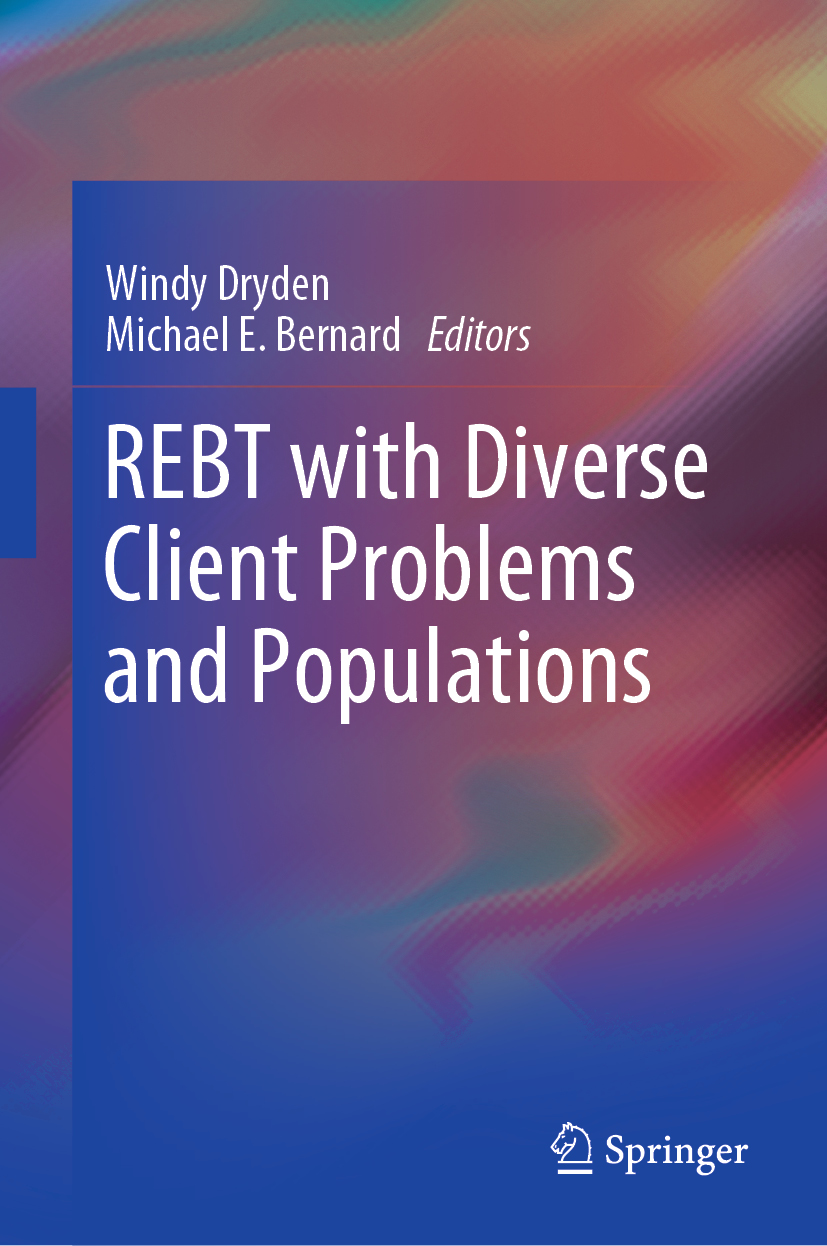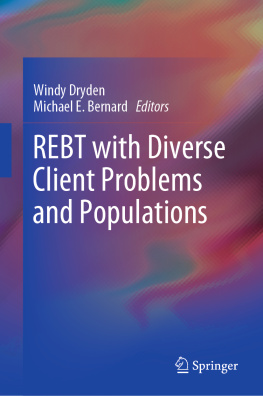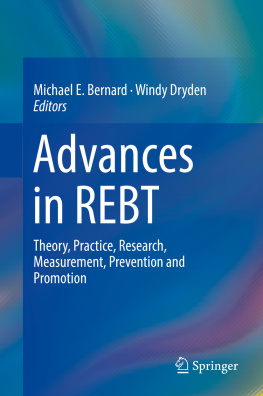Windy Dryden - REBT with Diverse Client Problems and Populations
Here you can read online Windy Dryden - REBT with Diverse Client Problems and Populations full text of the book (entire story) in english for free. Download pdf and epub, get meaning, cover and reviews about this ebook. year: 2019, publisher: Springer International Publishing, genre: Romance novel. Description of the work, (preface) as well as reviews are available. Best literature library LitArk.com created for fans of good reading and offers a wide selection of genres:
Romance novel
Science fiction
Adventure
Detective
Science
History
Home and family
Prose
Art
Politics
Computer
Non-fiction
Religion
Business
Children
Humor
Choose a favorite category and find really read worthwhile books. Enjoy immersion in the world of imagination, feel the emotions of the characters or learn something new for yourself, make an fascinating discovery.
- Book:REBT with Diverse Client Problems and Populations
- Author:
- Publisher:Springer International Publishing
- Genre:
- Year:2019
- Rating:5 / 5
- Favourites:Add to favourites
- Your mark:
- 100
- 1
- 2
- 3
- 4
- 5
REBT with Diverse Client Problems and Populations: summary, description and annotation
We offer to read an annotation, description, summary or preface (depends on what the author of the book "REBT with Diverse Client Problems and Populations" wrote himself). If you haven't found the necessary information about the book — write in the comments, we will try to find it.
REBT with Diverse Client Problems and Populations — read online for free the complete book (whole text) full work
Below is the text of the book, divided by pages. System saving the place of the last page read, allows you to conveniently read the book "REBT with Diverse Client Problems and Populations" online for free, without having to search again every time where you left off. Put a bookmark, and you can go to the page where you finished reading at any time.
Font size:
Interval:
Bookmark:


This Springer imprint is published by the registered company Springer Nature Switzerland AG
The registered company address is: Gewerbestrasse 11, 6330 Cham, Switzerland
In this volume, leading REBT therapists were invited to write on the application of REBT to a variety of client problems and with a variety of client populations. Each of the contributors was asked to write to a common chapter structure so that readers could see the commonalities and differences in the practice of REBT across the clinical spectrum. What follows is the common chapter structure.
Key REBT Theoretical Concepts in Working with (the Clinical Problem or Population)
Key Best Practice REBT-Based Assessment and Treatment Strategies and Techniques in Working with (the Clinical Problem or Population)
Treatment Guidelines from the Empirically Supported Therapy Literature that Can Inform Best Practice in REBT with (the Clinical Problem or Population)
Brief Case Example
What I Have Learned about Using REBT with (the Clinical Problem or Population)
How they accommodate clients individual differences in their practice of REBT with the client problem or population. We suggested the following factors here amongst others: client gender, ethnicity, socio-economic status and intelligence.
The dos and donts in the practice of REBT with the featured client problem or population.
Which aspects of REBT they consider deliver the most benefit for change and which dont.
REBT is a dynamic approach and has evolved over time as Elliss piece details in Volume 1. We have sought to show in this book how REBT therapists conceive of best practice with a range of clinical problems and populations by drawing on what is most valuable within REBT and what is most valuable outside REBT.
There are several disorders that are included in the classification of anxiety disorders (e.g., Generalized Anxiety Disorder, Social Anxiety Disorder, Panic Disorder, Agoraphobia, and specific phobias), but this chapter will primarily focus on the clinical similarities among these disorders and how Rational Emotive Behavior Therapy (REBT) concepts, methods, and current research can be applied across the treatment of the various anxiety disorders. Since its inception, REBT has been a therapy utilized for numerous emotional problems and psychological disorders (Ellis, ) has provided strong support for REBT as an efficacious transdiagnostic approach . REBT practitioners can therefore utilize REBT effectively across various anxiety disorders as opposed to the use of disorder-specific treatment protocols.
When working with anxiety disorders, the conceptualization of anxiety as an unhealthy negative emotion is essential to facilitate change with clients. Among the cognitive behavioral therapies, REBT uniquely posits a theory of emotion that involves a qualitative as opposed to a quantitative change in emotion (Ellis, ).
Font size:
Interval:
Bookmark:
Similar books «REBT with Diverse Client Problems and Populations»
Look at similar books to REBT with Diverse Client Problems and Populations. We have selected literature similar in name and meaning in the hope of providing readers with more options to find new, interesting, not yet read works.
Discussion, reviews of the book REBT with Diverse Client Problems and Populations and just readers' own opinions. Leave your comments, write what you think about the work, its meaning or the main characters. Specify what exactly you liked and what you didn't like, and why you think so.









